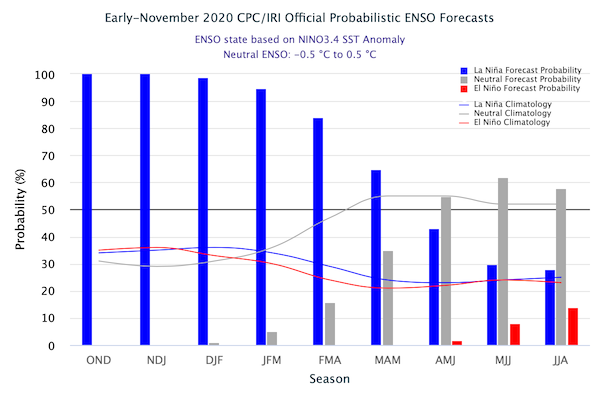According to NOAA’s Climate Prediction Center, we have a 100 percent chance of a La Nina through winter, and a better than 90 percent chance through early spring. After that, the probability drops but stays above 50 percent through the March-May period before we go into the typical low probability in summer 2021. This is expected to be at least a moderate event and some indicators show that it may be a strong event. This means that all of Florida, Georgia and Alabama can expect to be warmer and drier than normal for the winter. Signals are weaker and more variable for the Carolinas and Virginia but show the same tendency. La Nina is not associated with unusually late frosts (compared to neutral conditions) but the warm winters could bring plants out of dormancy earlier in the year, making them vulnerable to even normal spring frosts. For fruit farmers, the number of chill hours in La Nina winters is quite a bit lower than in neutral or El Nino years, which may be a concern for some. The warmer winter will also mean more overwintering of pests and diseases, increasing pressure next year. In addition, spring soils are likely to be drier than normal, which could lead to an early summer drought if we go through a dry spell with no moisture reserves in the soil. At this point, it is far to early to worry because we are still wet in most places, but it is something to watch for next planting season.
